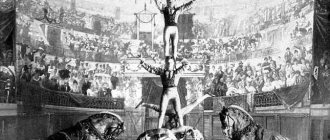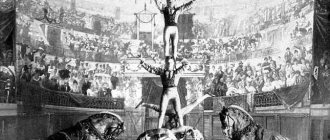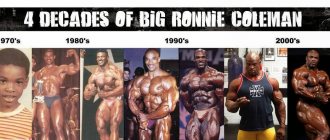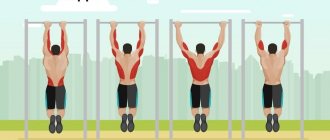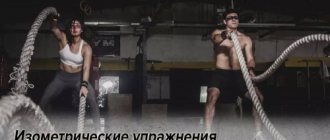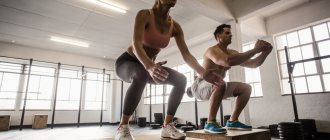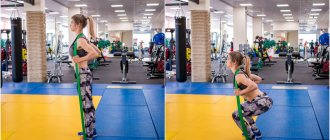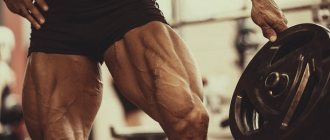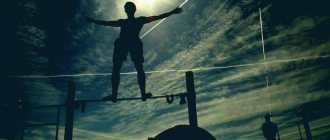A person's possession of remarkable strength has always attracted the attention of society. General admiration for the physical capabilities of individual unique individuals has not diminished in intensity throughout the entire history of human existence.
Those who have seen with their own eyes the manifestations of the developed abilities of strongmen do not remain indifferent. And everyone asks the question: How is this possible for an ordinary person?
The life story of a magnificent athlete, ways of developing the strength and strong-willed character of Alexander Zass, will reveal the secrets of the amazing abilities of this amazing person.
Short biography. The birth of the power of Iron Samson
Little Sasha was born on February 23, 1888, in the family of a simple peasant. He was the third child in a family of seven people: father Ivan Petrovich, mother Ekaterina Emelyanovna and two more brothers and two sisters Alexander. They lived in the Vilna province of the Russian Empire, on a small farm without a name.
Childhood, youth and circus
Soon after Sasha's birth, the whole family moved to Tula, and then to Saransk, since Ivan Petrovich received the position of clerk. The landowners' estates, which were managed by his father, were located between Saransk and Penza.
The management of bank accounts and household management was completely taken over by the purposeful and strong-willed Ekaterina Emelyanovna. The entire life of the Zassovs was arranged in such a way that each family member worked constantly, as hard as he could. From memories it is known that the family did not need, there was plenty of food and drink, but all this was obtained through hard, incessant work.
Alexander’s childhood was not full of interesting events, but his father had high hopes for his son: he trusted him with the transportation of large sums of money to be credited to a bank account and saw Sasha as a locomotive driver in the future. His father was ready to provide him with a good technical education, but the boy himself was not drawn to this profession.
The soul of the future athlete strived for bright, enchanting circus performances.
One day, after a successful transaction for selling horses at a fair, Ivan Petrovich went with his son to a performance of a traveling circus. The spectacle deeply shocked Sasha with its festive splendor. I especially liked the strongman who bent an iron rod around his neck and easily juggled heavy weights.
The incredible sharpness and intensity of the emotions received at the performance did not allow Sasha to fall asleep that evening. And then he committed a terrible crime - he ran away from the room at the inn where he and his dad spent the night and, at his own expense, watched the artists perform again.
After such disobedience, the father severely punished his son and then sent him to work as a shepherd in a remote village. The boy was 12 years old when he learned to manage large herds of horses, cows and camels, and also gained undeniable authority among six ferocious and capricious wolfhounds, who obeyed him well in his work.
Thoughts about the circus did not leave Alexander all this time. He learned to shoot well, protecting the herds from predators. mastered the basics of training, teaching horses circus tricks. All this was useful to him later.
Returning to Saransk, Sasha began studying the biographies of famous gymnasts, athletes and circus performers. His idol was Evgeniy Sandov, the most famous strongman of the 19th century.
The boy enthusiastically collects literature on the development of physical capabilities and body strength, studies the works of famous athletes, masters exercises using available materials: wood, stones, and carries a calf on his shoulders.
And although Sashenka was a weak, sickly child as a child, regular exercise brings significant benefits to the health and endurance of the body. he feels his muscles strengthen and his body’s strength capabilities expand.
When Alexander turned 20, his father sent him to Orenburg to study as an assistant driver. At the same time, the famous Andrzhievsky circus comes to the city on tour and, of course, the young man goes to the performance.
The boundless love for the circus, the skills acquired through regular training and the desire to realize his lifelong dream add courage to Alexander. And he turns to the director of the circus with a request to hire him. To his surprise, he receives approval with the explanation that for now he will only be hired as a laborer and his life will be very difficult. But the future artist, hardened by difficulties, is not afraid of obstacles on the way to his dream and goes to work in the circus.
At the new place, Sasha does the hardest “menial” work. He meets and begins to help the athlete Kuratkin prepare for power routines. With his determination and perseverance, Zass earned the sympathy of the strongman and he teaches the young man the wisdom of circus performances.
Thanks to self-training and competent mentoring, the young man begins to perform in the arena within a few months.
In the future, Alexander Zass will perform in the Yupatov and Khoitsev circus, constantly improving his athletic abilities.
War, captivity and escapes
The outbreak of the First World War suspended the development of the career of the great strongman. And, after mobilization, Alexander Ivanovich Zass was enlisted in an infantry regiment, and then in reconnaissance, where he made mounted raids behind enemy lines.
He turned out to be a skilled and fearless warrior, his developed fighting qualities and skills ensured a quick promotion, and his brave deeds were legendary.
Thus, the story of how Alexander brought a wounded horse back to his regiment was very popular.
But we didn’t have to fight for long. In the battle, the athlete was seriously wounded and captured. Doctors wanted to amputate both of his legs, but the indecisiveness of the doctors and regular passive exercises from the personal system made such an operation completely unnecessary.
The prisoner, thanks to incessant training, left to his own devices, learned to walk again. After some time, he not only walked on crutches, but also helped care for other patients.
Four escapes from captivity speak of the great perseverance and fortitude of the Russian hero. Each time, overcoming any obstacles, Alexander found himself free and tried to get to his people. Three times he was caught, and, after severe punishment, he was returned to hard work or imprisonment. And only on the fourth time, we managed to break free completely.
Life in Europe and circus acts
Having suffered in the war and in captivity, Alexander Ivanovich decided that there was no place for a soldier of the tsarist army in Soviet Russia and remained in Europe. In the early 20s of the last century, the athlete took the pseudonym Samson, under which he performed in the Schmidt Circus. With his unique abilities he won worldwide fame and enormous popularity among the European public.
He performed briefly in Paris, then at 24 he received an invitation from Oswald Stoll, the head of British variety shows. Having moved to England, he settled there until the end of his life.
Throughout his life, Alexander Ivanovich Zass studied and analyzed the physical capabilities of the human body. He tested his knowledge in practice, proving by personal example the effectiveness of the exercise systems he used, and now we can apply his wealth of experience in improving our body.
Search for mentors
After some time, Alexander was guided not by books, but by the recommendations of real people. So, he had long been worried about the idea of finding mentors and people who had achieved something and could share their valuable knowledge with him. His teachers were Pyotr Krylov and Morro-Dmitriev.
They were quite interesting and famous athletes, impressing the audience with their performances. It was they who created a certain set of exercises for the young man that would help him achieve the desired heights. It should be noted that the training method of Alexander Zass, which he originally came up with, has been preserved. In other words, athletes recognized its effectiveness and simply supplemented it with certain exercises. It is believed that Morro-Dmitriev made the greatest contribution to the development of Samson’s future, because it was he who told the young man about all the features, subtleties and tricks of working with a barbell.
By the age of 18, the young guy had developed enormous strength. He regularly visited the circus in order to watch circus strongmen and learn something new from them. When he reached a certain peak, he decided to develop himself further. He didn’t want to stop, so he filled his props with nails, metal rods, horseshoes, etc.
All this was new to him because he had not encountered such elements before. Nevertheless, he understood that if he stopped there, he would remain a developed and strong, but ordinary athlete. He himself admitted that it was when he began working with non-standard props that he realized that this is what greatly develops physical spiritual strength, and not weights and barbells. In order to work with such unusual instruments, you need much more strength, endurance, patience and will.
Training principles of Alexander Zass
The athlete started training very early. Little Shura used available means, such as a heavy barrel, stones, and wood. Trying to lift the barrel, he noticed how he was gradually becoming stronger in everyday life, although he had not yet been able to overcome the projectile. Thus, drawing conclusions during the training process, he derived his own principles for the development of strength indicators.
Focus on tendons
The first principle includes the development and strengthening of tendons, which, according to the master himself, are the second strongest tissue in the body, after bones.
Large muscles without a strong tendon base are not a guarantee of great physical strength.
I don't believe in big muscles unless there's real big tendon power next to them. You can see physical fitness enthusiasts who have quite large muscles. But what good are they if there is no powerful foundation - developed tendons. They are unable to fully utilize the strength of their muscles during an actual test of strength. And therefore their power is only an illusion.
Increasing tension, with an action that is obviously impossible, without including motor muscle contraction in the process, is the basis of isometric exercises.
Pushing a wall, trying to lift a truck, breaking a chain, etc. Such efforts best strengthen the tendon system of the body.
The importance of dynamic exercises
The second principle is to increase muscle size through the use of dynamic exercises.
An increase in muscle mass occurs due to monotonously repeated muscle contractions with a gradual increase in the mass of the projectiles used.
Alexander Ivanovich considered increasing muscle volume a priority in achieving a spectacular appearance, giving preference to the development of tendon strength.
Application area
Zass isometric exercises are recommended in the following cases:
- The athlete has an initial level of training. In static conditions, it is impossible to obtain a load that the body cannot withstand. Accordingly, when performing the exercises of Zass (“Iron Samson”), a person does not expose his tendons to danger.
- In normal training, the athlete has reached a dead end. For many, one day a dead point occurs when, with the same efforts, no development occurs. The philosophy of isometric exercises will allow you to look at training in a new way and quickly get out of a dead end.
- When you need to increase your strength. In this case, the static load should alternate with dynamic.
Alexander Zass training program
The training program, developed on the basis of personal experience, includes a set of isometric and dynamic exercises. In addition to using special exercises, the master noted the need for a healthy lifestyle without alcohol and nicotine.
Alternating exercise with rest, accompanied by high-calorie nutrition, daily jogging of 3 km, gymnastics.
But the athlete considered the development of tendon strength to be the basis of all success. And only after strengthening the tendons can you begin to improve the muscular system.
Zass tendon exercises
They consist of two training sessions, developed on the basis of personal knowledge and practical experience of the master. It must be remembered that these exercises create the basis for the successful development of all physical abilities of the body and are dominant in the athlete’s system.
Basic rules for performing tendon exercises
- A positive attitude is required. All exercises are performed with pleasure, readiness for stress and concentration of the whole body.
- The whole body is subject to training. The main goal will be to create a force wave in the body, not lifting weights or breaking a chain.
- Calm, even breathing when tension increases.
- Smooth entry and exit from gain, without jerks or sudden movements.
- Full training no more than twice a week and no longer than an hour in duration. Gains for 5 repetitions would be correctly distributed as follows: 1. - 75%, 2. - 90%, 3. - 95%, 4. - 90%, 5. - 75%.
- The interval between exercises is 30-60 seconds.
- To maintain tone, select 5-8 exercises and do them daily, performing 1 - 3 efforts, with tension distribution: 60% - 90% - 75% for each exercise.
- Maintaining gradualism and consistency.
- Mandatory regularity of classes.
- Paying attention to your well-being.
First set of exercises
| We hold the ends of the chain in our hands. We bend our right hand and stretch the chain. The left arm remains straight while holding the chain. We repeat for the left hand. |
| Hands hold the chain above your head, straight at shoulder width or slightly wider. We stretch the chain to the sides, strain our arms, chest, and upper back. |
| We bend our arms in front of our chest, holding the chain and pulling it with our left hand to the right elbow, and with the right hand to the left. |
| We stretch the chain behind our back, working the triceps. |
| We stretch the chain behind our back, connecting the abdominal and chest muscles to the triceps. |
| Exhaling, wrap the chain around your chest and secure it. As you inhale, tense your chest and back, stretching the chain. |
| We use two chains with leather loops attached. We thread the feet into the loops. The body is straight as a string. Hands are lowered along the body. We pull the chains, straining the trapezius muscles and arms. |
| We change hands in the starting position. We engage the triceps and deltoid muscles. |
| Changing the starting positions of the arms and legs. We pull the chain, trying to bend the arm at the elbow. We do it for both hands alternately. |
| We pull the chain, leaning on the left and right thigh alternately. |
| We reach for the left, then to the right supporting leg alternately, changing the starting position. |
| We overcome the resistance of the chain in a lying position. The back is straight, the abs tense. |
| We stretch the apparatus in a handstand, while balancing we direct the load towards the fingers. |
| We put one leg through the lower loop of the chain and step on it, and put the other one on the head so that its upper part covers the back of the head. We stretch the chain, including the muscles of the neck, back, abdominals, and chest. |
| We keep the body straight, maintaining balance. We stretch the chain with our right hand and right foot. We try to bend our arm as much as possible at the elbow and straighten our leg. The muscles of the arm and the back of the thigh work. We do it for the left side. |
Second set of exercises
- We bend and raise our arms with the chain in front of our chest. elbows at shoulder level. Stretch to the sides.
- Bent arms behind head. We stretch the chain by changing the grip width.
- Two chains with loops at both ends. By changing the length of the chains, we pull them straight up to the shoulders, at the level of the head and above it, alternately.
- We pass the foot of the right foot into the lower loop, and hold the upper loop in our hand. Pull the chain by straightening your arm upward. We perform the exercise alternately and simultaneously.
- We wrap the chain around the chest while inhaling and secure it. We try to inhale more, expanding the chest.
- Legs wider than shoulders. Loop on the right foot, bent left arm at waist level, pull the chain. Repeat for the right hand.
- We attach the chain to the wall at waist level, pull it with our hands, trying to pull it out of the fastening.
- We attach one end of the chain to the floor, and on the other we attach a handle at knee level. pull, trying to tear the chain out of the fastening. Can be repeated at different grip levels.
Grade
The assessment will provide us with information to develop a personalized program. Apply individual clauses correctly; Invest in good education to understand assessment protocols. Correlate results from multiple assessments (cluster testing) to provide an accurate picture of the position, structure and function of the shoulder complex. The following types of assessment are recommended (Clark & Lucett, 2010):
- Static posture assessment
- Assessment in transitional provisions
- Assessment of dynamic movements.
When performing a static assessment, look at the five main load-bearing joints at the front, side and back. Look at the ankles, knees, pelvis, shoulders and head - the five control points of the kinetic chain. A simple assessment of transitional positions: the Appley touch test or the shoulder rotation test can help determine movement asymmetries and also to some extent assess thoracic mobility (Clark & Lucett 2010; Cook et al. 2010).
Other options for assessing transitional positions include the overhead squat test, the push-up or press test, and the pull-up or deadlift test, which shows how the shoulder complex is integrated into the movement of the rest of the kinematic chain (Clark & Lucett, 2012). When assessing overhead stick squats, have the client start in a neutral position and observe 5 to 10 repetitions performed from the front, side, and back. Also note the asymmetries and compensations in motion in other regions of the kinetic chain.
Each assessment is an exercise and each exercise is an assessment. Watch the client perform presses and rows, such as a standing crossover press or a lunge resistance band row. Change your observation point every few reps and keep an eye on all 5 control points. Watch for lifting of the shoulder girdle, flexion of the thoracic region, extension of the neck, or hyperextension of the lower back. If the client performs the movement well, demonstrating sufficient stability and mobility, increase the difficulty of the exercise. Additional information can be found in the Clinic Assessment and Corrective Exercises appendix.
Dynamic exercises
Despite the fact that Alexander Ivanovich placed the main emphasis on tendon exercises, over time he began to note the need for dynamic ones, which play a significant role in acquiring a spectacular appearance. After all, at the beginning of his career, he did not impress the public with his enormous, superbly developed muscles, which, however, did not prevent him from showing miracles of strength capabilities.
The exercises are presented with weights in the form of a special bag, the weight of which was increased by gradually replacing the filler with a heavier one. From 7 kg of sawdust he moved up in weight, gradually replacing them with sand, shot, and then lead so that the final weight reached 70 kg.
1. Feet shoulder-width apart, bag on the floor, slightly bending your legs, lift the weights to your chest in one motion. After a pause, press up above your head and fix the position, then return to your chest and to the floor. (10-15 times).
2. Feet shoulder-width apart, the bag in the palm of one hand near the shoulder, squeeze the weight up, fix the position and rotate the projectile using the wrist as the axis of rotation. Repeat for the other hand. Complication: with the bag raised at the highest point, we make alternating movements with our fingers, as if we are trying to lift the projectile even higher. We perform to the maximum possible repetitions.
3. Standing with your heels together and toes apart, hold the bag on your chest. We squat on our toes, simultaneously squeezing the bag up, and fix the position. Next, we return the weight to the chest, while straightening the legs. (10-15 times).
4. Legs wider than shoulders, bag on the palm near the shoulder. Pushing with the strength of our legs and arms, we transfer it to the other hand so that the projectile describes a semicircle in the air. We gradually increase the force of the push and the magnitude of the flight path (10-15 times).
5. Feet wider than shoulder width, knees slightly bent. We hold the bag at knee level. simultaneously straightening the legs and torso, we throw the projectile up and catch it on the shoulder blades, absorbing the blow with our legs. We throw it to the left and catch it with our hands. Repeat for the right side.
6. Lying on your back, bag behind your head at arm's length. We take the bag in our hands and lift it up with straight arms to a vertical position, lower it onto our chest, then squeeze it up and return to the standing position. (10-15 times).
7. I.p. the same as in ex. 6. The bag is at the level of the ankles of straight legs, take it with your feet and lift it up, transfer it to your feet and do a bench press. We return to IP. (10-15 times).
8. Standing with your heels together and toes apart, hold the bag with your hands on the floor. Raising the projectile up through the left side, we describe an arc above the head and lower it through the right side. Repeat clockwise and counterclockwise. (10-15 times).
Notes
Evgeniy Sandov became Zass's idol from adolescence. He conducted a correspondence competition with him and he did not let his spiritual teacher down: he took the next broad step in the development of the method and methods of developing strength.
Zass combined tendon exercises with chains and dynamic exercises with a bag. The bag exercises helped him develop more muscle mass. This mass was needed not so much for performing the numbers, but for acquiring a “marketable” appearance.
The morning classes ended with a series of exercises with a bag. The bag was shaped like a boxing bag and was filled with sawdust. The bag weighed 7 kilograms. Every day I poured a handful of sawdust out of it and added a handful of sand. When all the sawdust was replaced with sand, he began to pour out the sand and add shot. In the end, he trained with a bag filled with lead, weighing about 70 kilograms.
But imagine: you throw a bag of sawdust on your back and catch it on your back. And a year later - a bag of sand! And at least henna.
Between sand and lead, given the density, iron can be used. Lead, babbitt, old batteries. The bag can be sewn from thick leatherette by inserting an iron zipper from the side (under the cover). Alternative option: tarpaulin fabric on the outside, bag fabric on the inside.
Alexander's day began with a three-kilometer run. Then there were trainings with iron rods - he bent them on his knee, tied them in a knot, curled them in a spiral. He learned to break chains in two movements: take two adjacent links, squeeze them with his fingers, turn back and forth until it stops - and the chain breaks.
A lot of time was spent on exercises to develop the pectoral and back muscles. Having loaded the platform placed on his chest with stones, young Aleksandrs Zass took several deep breaths, then rested, after which he stood on the “bridge” and bent over.
Zass often repeated: Large biceps are not a criterion of strength in the same way as a large belly is a sign of good digestion.
“Muscles by themselves will not hold horses pulling in different directions, but tendons will, but they need to be trained, they need to be developed, and there is a way to strengthen them.”
Ivan Shutov, Gennady Ivanov - modern strongmen - use the Zass system.
By means of the task itself.
World fame Zass
With his unique abilities, Iron Samson won enormous popularity and love from the audience. The contingent of his admirers spread from ordinary people to nobles. The fame of the amazing athlete thundered throughout the world.
The phenomenon of Iron Samson haunted many. Imitators of the amazing athlete appeared. The artist's international tours were extremely popular with viewers.
His photos appeared on the covers of magazines next to images of Evgeniy Sandov, who forever remained Zass’s idol.
Books dedicated to the Russian hero were published: “The Amazing Samson” - published in London in 1925.
All his life until his death, Alexander Ivanovich Zass remained an active, strong man. He demonstrated his last strength performance at the age of 66, subsequently training animals.
This wonderful man died as a result of an accident. While rescuing animals from a burning van, he suffered serious burns to his head and was taken to hospital. A few days later, Alexander Ivanovich died of a heart attack and was buried in Hockley, near London in 1962.
Historical reference
In different sources you can find different information about the ancient origins of statistical training. Some authors claim that they appeared in India, others in Ancient China, others in medieval Europe, and so on. It is impossible to understand where the truth is, because individual elements of isometric training were used along with dynamic exercises thousands of years ago. Therefore, discussions about the origin of static gymnastics are doomed to failure, as well as discussions about the origin of a bow or sword.
The only thing that is known for certain is that isometric gymnastics as an integral set of exercises appeared at the beginning of the twentieth century thanks to the work of Alexander Ivanovich Zass, a Russian strongman of Polish origin, who doubted the advisability of increasing muscle volume without thoroughly training the tendons. The fact that Zass has been recognized more than once as the strongest man in the world confirms the objectivity of this judgment.
Records of Alexander Zass
The amazing capabilities achieved with the help of a independently developed unique system of exercises still amaze the imagination:
- He carried a horse and a piano with people on his shoulders.
- He withstood the weight of a truck loaded with coal moving over him.
- I caught a cannonball weighing 90 kg, fired from a distance of 8 m.
- He was holding an iron beam with people in it with his teeth.
- Lying on a board with nails, he held a cobblestone weighing 500 kg on his chest, which anyone could hit with a sledgehammer.
The most important thing is self-control. I have been on the verge of death dozens of times. And only the ability to pull myself together, remain calm, and make a sound decision kept me alive.
The hero himself always said that strength lies in a person’s character and will, as well as in the strength of tendons and the ability to control muscles. Iron Samson left a trail of glory shining in history and his memory will never disappear.
